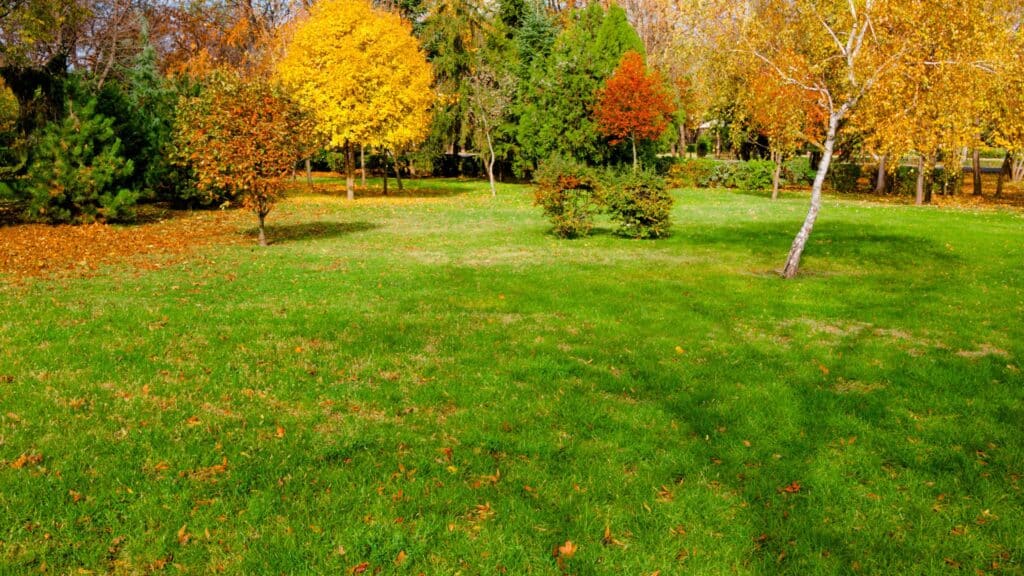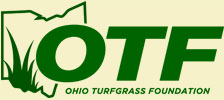8 Best Practices for Fall Aeration in Ohio to Revitalize Your Lawn
Aeration during the fall is an important part of keeping your grass healthy and strong. At Portage Turf Specialists, we offer expert aeration services in Ohio to help your lawn thrive by fixing soil problems. But what exactly is aeration, and why is it particularly beneficial in the fall?
What is aeration?
Aeration means making small holes in the soil to let air, water, and nutrients reach the grass roots. This helps loosen up the soil, improve drainage, and encourage deeper root growth, so your grass grows healthier and stronger.
Fall is the best time for aeration because it gives the grass roots room to spread and store nutrients before winter. The cooler weather and extra moisture in the fall also help your lawn recover faster and get ready for the next growing season.
What are the benefits of core fall aeration?
Improves drainage
Compacted lawns can struggle to absorb water, leading to pooling. Aeration loosens the soil, allowing water to soak in deeper and keeping your lawn properly hydrated.
Enhances air circulation
When the soil is compacted, air can’t reach the roots as easily, which affects grass health. Aeration opens up the soil, allowing more air to flow to the roots, helping your grass grow stronger
Boosts nutrient uptake
Your lawn needs nutrients to thrive, but compacted soil can block them from reaching the roots. Aeration helps nutrients get to the roots more efficiently, making your grass lush and green.
Promotes strong root development
Aeration gives roots more room to grow deeper and stronger, helping the grass survive winter and thrive in the spring.
Reduces thatch build-up
Aeration helps break down thatch, which can prevent pests and diseases, keeping your lawn healthier.
8 Best Practices for Lawn Aeration in Ohio
Want to get the most out of aerating your lawn? Follow these simple steps, especially tailored for Ohio’s cool-season grasses like Kentucky Bluegrass, Perennial Ryegrass, and Fine Fescue:
1. Prepare your lawn.
- Before aerating, mow your lawn down to about 1.5-2 inches. This makes it easier for the aerator to do its job.
- Give your lawn a light watering the day before. You want the soil moist (but not soaked!) so it’s easier for the machine to pull out those soil plugs, especially in Ohio’s compacted clay soils.
- Use flags to mark sprinklers, shallow pipes, or anything you don’t want the aerator to hit.
2. Aerate at the right time
In Ohio, fall is ideal for aeration, especially from mid-September to early October. The cooler temperatures and higher moisture levels give your lawn the best chance to recover and prepare for winter.
3. Leave soil plugs to decompose.
After aerating, don’t worry about the small plugs of soil on your lawn. Let them break down naturally—they’ll return organic nutrients to your soil. If you’re feeling tidy, run a mower over them to speed things up.
4. Follow a consistent watering schedule.
Stick to a steady watering schedule, about 1-2 times per week, with around 1 inch of water each time. Just don’t overdo it—too much water can cause issues, especially in Ohio’s cool fall weather.
5. Fertilize after aeration.
Apply a slow-release fertilizer right after aeration. The aeration holes allow nutrients to reach the roots more effectively, promoting stronger and healthier grass growth.
In Ohio, using a balanced fertilizer with a higher nitrogen content helps cool-season grasses thrive.e nutrients deep into the roots, giving your grass the boost it needs to grow strong.
6. Overseed for a thicker lawn.
Fall aeration creates ideal conditions for overseeding. After aeration, spread new seed to thicken bare patches or strengthen thinning areas.
Choose a seed mix suited to Ohio’s climate, such as Kentucky Bluegrass or Perennial Ryegrass.
7. Minimize foot traffic.
After aerating, give your lawn a break. Try to stay off it for a few weeks to let the soil and grass recover properly.
8. Tackle those fall leaves.
Ohio’s fall season brings plenty of leaves, so it’s important to keep your lawn clear. Use a mulching mower to shred leaves into small pieces that will decompose, providing extra nutrients to the soil.
Avoid These Common Mistakes to Get the Best Results from Aeration
1. Aerating in extreme weather
Don’t aerate during extreme heat, freezing temperatures, or right after heavy rain. Hot or cold stress can damage the grass, and wet conditions can make the soil too heavy to aerate properly.
Check the forecast and aim for cooler fall days, especially in Ohio. If the soil is too wet, let it dry out for a day or two before aerating.
2. Not aerating deep enough
Shallow aeration that only goes 1 inch deep won’t do much for compacted soil. To really relieve soil compaction, your aerator needs to go 2-3 inches deep.
Check your aerator settings before starting. For Ohio’s clay-heavy soil, deeper cores are key to loosening things up.
3. Using the wrong equipment
Using a spike aerator or a machine that doesn’t match your soil type isn’t gonna work. Spike aerators can compact the soil further, and the wrong equipment can lead to poor results.
We recommend renting or buying a core aerator. It’s the best option for removing plugs and relieving compaction. If you’re unsure, consult with a local garden center to choose the right tool based on your lawn’s soil type.
4. Skipping lawn prep
Aerators struggle to penetrate long grass or dry, hard soil, so it’s important to mow your lawn to about 1.5-2 inches and lightly water it the day before aeration. This softens the soil, making it easier for the aerator to pull out cores.
5. Ignoring heavily compacted areas
Some areas, like high-traffic spots, need extra attention to relieve compaction. Go over compacted areas more than once to make sure the aeration is effective.
If you have particularly stubborn spots, consider adding soil amendments like compost to improve structure.
How often should you aerate your lawn?
For most lawns, aerating once a year is usually enough to keep the soil healthy and the grass looking great.
But if your lawn sees a lot of foot traffic, has clay soil, or builds up thatch, you might want to aerate twice a year, once in the fall and again in the spring.
Does your lawn need professional help?
Is your lawn looking a little tired or struggling to thrive despite your efforts? It might be time to call a professional. At Portage Turf Specialists, we specialize in bringing lawns back to life with our professional aeration and overseeding services.
We provide professional lawn care in and around Ohio, including core aeration and overseeding, in areas like North Canton, Green/Uniontown, Norton/Copley, Fairlawn/Bath, Hudson, Stow, Aurora, and more.
Get in touch with us today for a quote on aeration, lawn fertilization, or overseeding services, and see the difference expert care can make for your yard.






